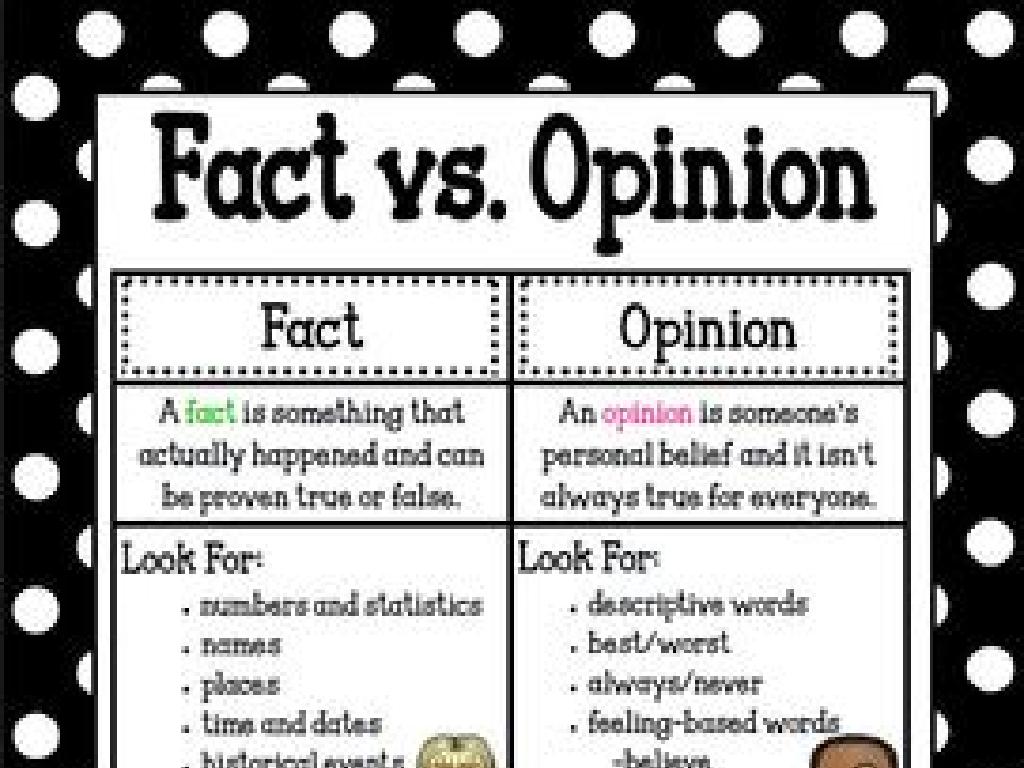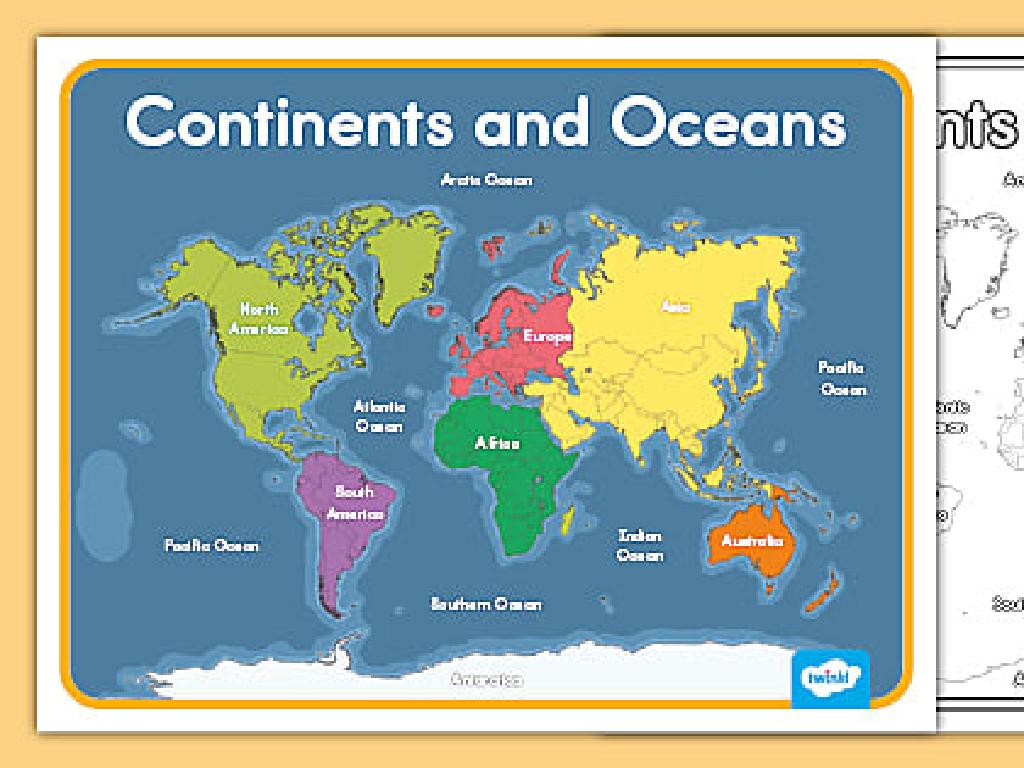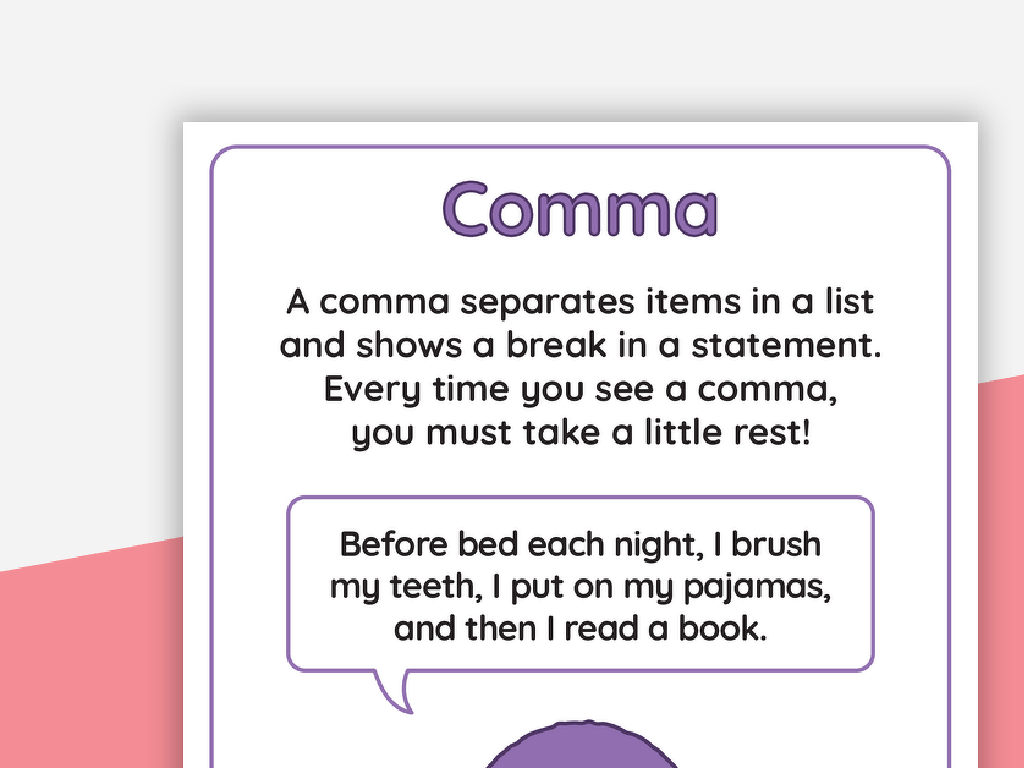Form And Use Comparative And Superlative Adverbs
Subject: Language arts
Grade: Sixth grade
Topic: Adjectives And Adverbs
Please LOG IN to download the presentation. Access is available to registered users only.
View More Content
Exploring Comparative and Superlative Adverbs
– Define adjectives and adverbs
– Adjectives describe nouns; adverbs modify verbs, adjectives, and other adverbs.
– Comparative and superlative adverbs
– Comparative adverbs compare two actions; superlative adverbs compare three or more.
– Significance in language
– They add precision and detail to descriptions, enhancing communication.
– Examples in sentences
– Comparative: ‘She runs faster than him.’ Superlative: ‘She runs the fastest in her class.’
|
This slide introduces the concept of adjectives and adverbs, focusing on their comparative and superlative forms. Begin by explaining that adjectives describe nouns (e.g., ‘big’, ‘small’) and adverbs modify verbs, adjectives, and other adverbs (e.g., ‘quickly’, ‘very’). Then, discuss how comparative adverbs (e.g., ‘faster’, ‘better’) are used to compare two actions, while superlative adverbs (e.g., ‘fastest’, ‘best’) are used to compare three or more actions. Emphasize the importance of these forms in providing clear and detailed descriptions in language, which is crucial for effective communication. Use sentence examples to illustrate how these adverbs function in context. Encourage students to think of their own examples and understand that these adverbs can greatly enhance their writing and speaking skills.
Exploring Adverbs
– Definition of an adverb
– Adverbs: modify verbs, adjectives, adverbs
– They describe how, when, where, or to what extent
– Examples: ‘quickly’, ‘softly’, ‘very’
– ‘He ran quickly’, ‘She spoke softly’, ‘It’s very big’
– Activity: Find adverbs in sentences
– Look at sentences and underline the adverbs
|
This slide introduces the concept of adverbs to the students, explaining their role in a sentence as modifiers of verbs, adjectives, and other adverbs. Provide clear examples to illustrate how adverbs function, using simple and relatable words like ‘quickly’, ‘softly’, and ‘very’. For the class activity, prepare sentences in advance where students can practice identifying adverbs. Encourage them to consider questions like: How did something happen? When did it happen? Where did it happen? To what extent did it happen? This will help them understand the modifying nature of adverbs. The activity should be interactive, allowing students to discuss their answers and understand the use of adverbs in context.
Comparative and Superlative Adverbs
– Comparative adverbs compare two actions
– They show which action is more or less intense
– Often end with ‘-er’
– Words like ‘quicker’, ‘slower’, ‘higher’
– Example: ‘Jason runs faster than Henry’
– ‘Faster’ compares the speed of Jason and Henry
– Forming comparative adverbs
– Add ‘-er’ to short adverbs or use ‘more’ for longer ones
|
This slide introduces comparative adverbs, which are used to compare the intensity or degree of two actions. Students should understand that these adverbs typically end with ‘-er’ for short adverbs. For example, ‘fast’ becomes ‘faster’ when comparing two subjects. It’s important to provide clear examples, like comparing the speed of two runners, to illustrate how these adverbs function in a sentence. Additionally, explain the rule for forming comparative adverbs from longer adverbs by using the word ‘more’ instead of the ‘-er’ suffix. Encourage students to think of more examples and practice forming comparative adverbs from adjectives they are already familiar with.
Forming Comparative Adverbs
– Add ‘-er’ to one-syllable adverbs
– Example: fast becomes faster
– Use ‘more’ with ‘-ly’ adverbs
– Example: quickly becomes more quickly
– Learn irregular adverb forms
– well to better, badly to worse
– Practice with examples
|
This slide introduces the rules for forming comparative adverbs, which are used to compare actions. Students should learn that for simple, one-syllable adverbs, ‘-er’ is added to create the comparative form. For adverbs that end in ‘-ly’, the word ‘more’ is used to form the comparative. There are also irregular adverbs that do not follow these rules, such as ‘well’ and ‘badly’, which become ‘better’ and ‘worse’ respectively. Provide students with additional examples and encourage them to create sentences using both regular and irregular comparative adverbs to reinforce their understanding. This will prepare them for identifying and using these adverbs in various contexts.
Superlative Adverbs
– Comparing three or more actions
– Use when an action is at the highest or lowest degree among others
– Often end with ‘-est’
– Words like ‘quickest’, ‘slowest’, ‘highest’ show extremes
– Example: Sarah reads the fastest
– ‘Of all the students, Sarah reads the fastest’ shows Sarah’s reading speed compared to all others
|
This slide introduces the concept of superlative adverbs, which are used to compare the action of one subject to multiple others, indicating the highest or lowest degree. Emphasize that while many superlative adverbs end in ‘-est’, some irregular forms exist and must be memorized. Provide the example of Sarah, who reads faster than any other student, to illustrate how superlative adverbs function in a sentence. Encourage students to think of more examples and to understand that these adverbs help to highlight the most or least in a group when comparing actions.
Forming Superlative Adverbs
– Add ‘-est’ to short adverbs
– For one-syllable adverbs, like ‘fast’, add ‘-est’ to make ‘fastest’.
– Use ‘most’ with ‘-ly’ adverbs
– For adverbs that end in ‘-ly’, like ‘quickly’, use ‘most’ to form ‘most quickly’.
– Learn irregular adverb forms
– Some adverbs are irregular, like ‘well’ which becomes ‘best’.
– Practice with examples
|
This slide introduces students to the rules for forming superlative adverbs, which are used to describe the highest degree of an action. Start by explaining that for simple, one-syllable adverbs, we add ‘-est’ to the end (e.g., ‘fast’ becomes ‘fastest’). For adverbs ending in ‘-ly’, we use ‘most’ in front (e.g., ‘quickly’ becomes ‘most quickly’). Highlight irregular forms such as ‘well’ to ‘best’ and ‘badly’ to ‘worst’, which don’t follow the standard rules. Provide students with a variety of examples and encourage them to come up with their own. Practice exercises could include identifying the correct superlative form in sentences and creating sentences using a list of adverbs provided.
Comparative and Superlative Adverbs
– Review examples together
– We’ll look at how adverbs change in different sentences
– Practice adverb conversion
– Change adverbs like ‘quickly’ to ‘more quickly’ or ‘most quickly’
– Explore irregular adverbs
– Some adverbs don’t follow the rules, like ‘well’ becoming ‘better’ or ‘best’
– Discuss importance of correct usage
|
This slide is aimed at helping students understand how to form and use comparative and superlative adverbs. Start by reviewing examples as a class to ensure students can recognize adverbs and their comparative and superlative forms. Move on to an interactive practice where students convert adverbs to their comparative and superlative forms, reinforcing the lesson. Highlight irregular adverbs, which do not follow the standard rules of conversion, and discuss why it’s important to use them correctly. This will help students understand exceptions in English grammar. Encourage participation and provide immediate feedback to solidify understanding. For the activity, consider having students work in pairs to find examples in text or create their own sentences using a list of regular and irregular adverbs.
Class Activity: Adverb Challenge
– Pair up and write sentences
– Use comparative and superlative adverbs
– Examples: ‘She ran faster today’, ‘He works hardest in the team’
– Share with the class
– Vote on the most creative use
|
This activity is designed to engage students in practicing the use of comparative and superlative adverbs in a fun and interactive way. Start by explaining that comparative adverbs compare two actions (e.g., ‘She ran faster than him’), and superlative adverbs compare more than two actions (e.g., ‘She ran the fastest of all’). Instruct the students to pair up and come up with sentences that include either comparative or superlative adverbs. After writing their sentences, each pair will share them with the class. Encourage creativity and correct usage of adverbs. Conclude the activity with a class vote on the most creative and grammatically correct sentences. This will not only reinforce their understanding of adverbs but also foster a collaborative and competitive learning environment. Possible variations of the activity could include creating a short story using adverbs, illustrating the sentences, or even acting them out if time permits.
Wrapping Up: Comparative & Superlative Adverbs
– Recap: Why adverbs matter
– Homework: Craft a short story
– Use your imagination and have fun with the story
– Include 5+ comparative/superlative adverbs
– Examples: ‘quicker’ than a rabbit, the ‘most quietly’ sneaking cat
– Share stories in the next class
|
As we conclude today’s lesson, remind students of the importance of adverbs in adding detail to their writing and speech. For homework, they should write a creative short story incorporating at least five comparative and superlative adverbs to practice their new skills. Encourage creativity and the use of vivid descriptions. Provide examples of comparative and superlative adverbs to help them get started. In the next class, students will have the opportunity to share their stories, which will help reinforce their understanding and allow them to learn from each other’s use of language.





